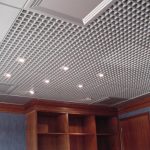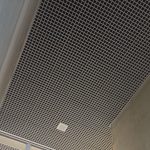When a dog chews on things in the house, the most important step you can take is to prevent your dog from accessing the object they are chewing in the first place. This may involve providing them with their own chew toys, removing temptation or creating a space where chewing is allowed.
Once you have eliminated access to objects that aren’t theirs, it is important to provide alternative outlets for your pup so they are not tempted to go back to destructive behavior. Providing something more acceptable for your pup to chew – like a dog toy – and using positive reinforcement when this substitution takes place (by praising and rewarding them) will help encourage and strengthen desirable behavior.
In addition, if your pup does go for an unacceptable item and gets caught in the act, utilizing time outs or verbal cues such as “leave it” can be helpful tools in teaching them what not to do. If these techniques don’t seem enough, incorporating negative reinforcement in a gentle but firm way will help solidify consequences when bad behavior arises. A clap of hands or firm “No!”work well here because it gets their attention and sends a clear message that you do not tolerate this action. After providing discipline and redirecting their attention away from the undesirable object, praise continued good behaviors or provide immediate rewards (a treat or special toy) when they put their energy into something more appropriate. Finally, always repeat this process until desired changes start taking shape so they understand consistent boundaries!
Understand the reason behind the chewng
The first step in punishing a dog for chewing on things is understanding why the chewing is happening in the first place. Is your pup teething? Are they bored or alone? seresto 8 month flea & tick collar for small dogs Or maybe they just find these objects interesting and worth exploring their teeth and mouth on!
It’s important to understand the source of the behavior so you can take steps to correct it. So if your pup is teething, offering them an appropriate chew toy can help them relieve their gums as well as provide an acceptable alternative to off-limits items. If they’re experiencing separation anxiety, making sure they get plenty of exercise will help prevent destructive behavior sparked by boredom or loneliness. And if curiosity is the culprit, providing plenty of toys or items that are okay for them to destroy can serve as positive outlets for those pent-up needs.
Introduce an alternative to chewing
One of the most effective ways to teach a dog not to chew on things is to introduce an alternative. This means that instead of leaving the dog alone with shoes and furniture, provide him with items he can gnaw on without damaging anything.
Some good choices are dog toys made from material that is too tough for the dog to destroy them in a short period like hard rubber, cotton rope toys and stuffed animals. Also easy do-it-yourself alternatives include frozen peanut butter filled Kongs and old socks filled with kibble, catnip and other safe treats. Placing these around the house will hopefully allow him to practice his natural urge for chewing but away from furniture and shoes!
When giving your dog his toy or treat, make sure to give plenty of praise and rewards so that he has a positive association with what he is allowed to chew on versus what is off limits in order to further solidify his good behavior.
Create a safe environment to move around
Creating a safe environment for your dog is essential when it comes to preventing them from chewing on inappropriate items. To do this, limit their access to certain areas or objects by blocking off any rooms with furniture and electronics that you don’t want them to be able to reach. You should also provide plenty of stimulating toys they can chew on as an alternative, such as rubber-based chew toys or bones designed specifically for dogs.
Another effective way you can limit your pup’s access to problem items is by teaching them verbal cues like “leave-it” and “no” in order to keep them away from the behavior you don’t want them doing. Additionally, whenever you catch your pup engaging in bad chewing habits, make sure that you take away the item they are chewing and give them a toy or treat instead as a positive reward for good behavior.
Provide chew toys and treats
Providing chew toys is an excellent way to distract your pup from destructive chewing. Choose a variety of textures, shapes and sizes that appeal to your pet’s interest. If possible, rotate out toys so the pup doesn’t get bored with the same ones all the time.
Provide high-value treats when you catch them in the act of chewing on off-limits items. That way they start associating something positive (the treat) with not chewing on nonapproved items. Make sure you give lots of praise as well after they take the treats so they know they did something good.
All dogs need mental stimulation and exercise, so make sure to keep them active with interactive toys or by taking a walk or playing fetch. The more mentally stimulated and exercised your dog is, the less likely it will resort to destructive behaviors like chewing.
Stop play when dog is chewing on something off-limits
One of the most effective ways to punish your dog for chewing on something off-limits is by stopping play. As soon as your dog starts to chew on something they shouldn’t, immediately stop playing with them. This sends the message that they will encounter negative consequences if they continue to act out.
In addition to stopping play, another way to punish a dog is via verbal reprimand. Try using words like “No!” and make sure to use a stern voice in order for them to take you seriously. Putting them in time out may also be necessary in some instances, but make sure you do this fairly and consistently so that your pet knows the rules and understands when they are misbehaving.







